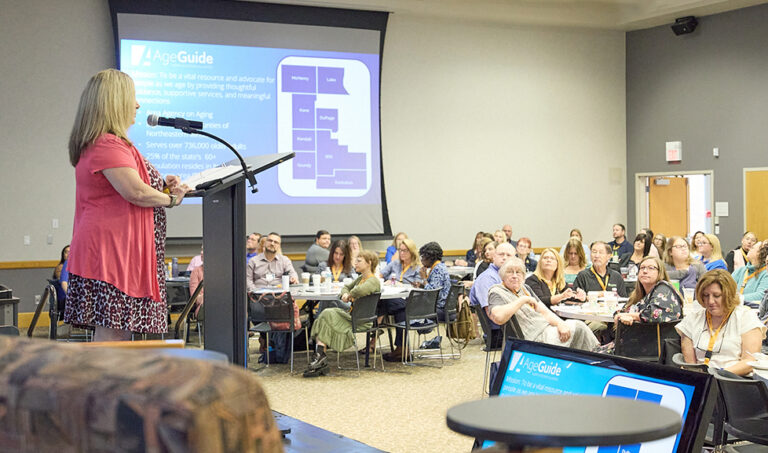
Jennifer is an award-winning writer and bestselling author. She is currently dreaming of an around-the-world trip with her Boston terrier.
Relocating older loved ones from a warm climate to a cold climate
![]() Fact checked by Catherine Gianaro
Fact checked by Catherine Gianaro
When my husband moved from Florida to live with me in Chicago, we had to manage a learning curve. He didn’t own a winter coat or thick gloves. His shoes weren’t suitable for snow or slick spots that needed extra traction. He didn’t know how to use a snow scraper on the car properly, either.
Luckily we had time to put some work in before the first big snowfall, and when winter rolled around, we were tackling smaller, simpler tasks (like the penguin walk when it’s icy out).
Soon, we’ll have a similar challenge to navigate. My in-laws are moving up here as well from Florida. Except, they’re in their 70s and aren’t as agile as they once were. We anticipate plenty of unexpected challenges that come with moving aging family members from a warm climate to a colder one.
Here’s what to keep in mind if someone you love is considering a similar move.
Pre-move
One of the main concerns when moving an aging relative to a colder climate is how to maintain their quality of life. They likely spent more time outdoors in the sun when they lived somewhere warm all year round, and the heat and humidity was easier on their bones and joints. So, start thinking about how to create a similar atmosphere before the move even begins.
Adult day care facilities offer one outlet, with wintertime programs and socialization, says Laura Herman, dementia behavior specialist at ABC Dementia. If they love to walk in the summertime, maybe a treadmill with a sunlamp for the winter or an exercise class at a gym or senior center would be helpful, says Amy Goyer, an AARP caregiving expert.
Goyer stresses the importance of considering your loved one’s health conditions. Arthritis can worsen in colder areas, and it’s harder to stay warm as we age. If they’re moving into your home, start inching up the temperature on the thermostat.
People at any age run the risk for seasonal affective disorder during the cold and darker months. But the risk intensifies if a person moves to a completely new area where they don’t yet have support networks.
Help your loved one build new connections and keep in touch with their already-established supports. It helps to have plenty of opportunities to make friends, so check on senior centers and social groups in your area. And keep vitamin D supplements and sun lamps on hand to stave off the winter doldrums.
Then there’s…the stuff. If your loved one needs to downsize for the move, remind them how much space they’re going to have and what they should budget space for.
Winter clothing takes up more space than summer gear, and it’s going to have to share space with everything else your loved one wants to bring in the move. Storage bins that rotate seasonally can help keep tight spaces manageable. Goyer also suggests having your loved one consider “legacy items,” or the things that are meaningful, such as antiques or old photos, and decide to either move them or give them to another family member.
During the move
Ideally, the big move will happen during temperate weather. The state of the inside of a moving truck isn’t always something people think about, says Marnie Dawson, owner of Chicago-based Dawson Relocation Services. Just like candles might melt in a truck on an extra-warm day, glass might shatter from extreme cold. Still, movers will work in every type of weather, barring a major weather event, such as a hurricane or blizzard.
If you’re driving, keep the ride engaging. That could mean a custom playlist, podcasts, or even photo albums that your loved one could look through on the drive, Herman says. Remember to take plenty of bathroom breaks and consider planning them out beforehand if you have accessibility needs or want stops to be entertaining.
Remember, too, that long drives are hard on people, and it might make more sense to fly. “There was a time when [my mom] could have driven across country, but now that would wear her out,” Goyer says. “And because it’s such a change, you really don’t want someone to arrive completely exhausted. Change is hard enough without that, right?”
If the move is a multi-day journey across changing time zones, help your loved one stay on top of their medication schedule. Herman says that services exist to take this task off your plate. Medication Call Reminder will call when it’s time for the next dose, for example. Alternatively, you can write everything out on a PillMap, or use a lockbox that alarms at set times. These solutions also will come in handy as your loved one adjusts to a new time zone or schedule.
Post-move
Once you get your family member up to the colder environment, it’s time to think practically.
Do they drive? If so, give them a primer on how to handle the car in the wintertime. Tell them what they should do if the car starts to spin on ice (turn the wheel into the spin) or slide on ice (pump the breaks). Load up their car with an ice scraper, shovel, and blanket. And especially if you live in a major city, acquaint them with parking regulations when it snows.
Speaking of regulations, if your loved one is moving into a place of their own, be sure they know the heating rules in their new home. In Chicago, for example, property owners must keep heat at or above 68°F during the day and 66°F overnight. Make sure your loved one knows where to go if the heat goes out in their space and to always have extra sweaters and blankets on hand.
Herman and Dawson say other cold-weather essentials to consider include:
- All-weather canes and walkers
- Lip balm and lotion
- Proper footwear
- Coats, gloves, hats, and scarves
- Humidifier
- A wardrobe with light, medium, and heavy layers
Moving from warm to cold brings challenges. But it is exactly the kind of reinvention that engages people and makes life interesting. Embrace the change — and the cold.
Relocation resources
Looking for some extra support for either yourself as a caregiver, or your loved one as the person moving to the cold? Goyer and Herman share these resources:
- AARP Family Caregivers Discussion Group: facebook.com/groups/aarpfamilycaregivers
- BenefitsCheckUp: benefitscheckup.org/
- Community Resource Finder: communityresourcefinder.org/
- Eldercare Locator: eldercare.acl.gov/Public/Index.aspx
- HomeFit Guide: AARP.org/homefit
- Keep the Memories, Lose the Stuff by Matt Paxton
- MedicAlert and Safe and Found: medicalert.org/our-partners/alz/
- National Association of Senior Move Managers: nasmm.org/
- Senior Center Directory: seniorcenterdirectory.com/











